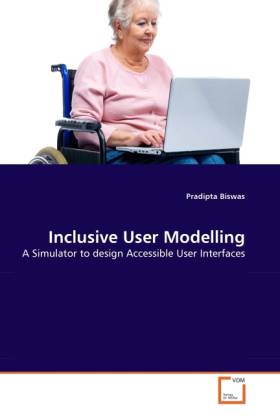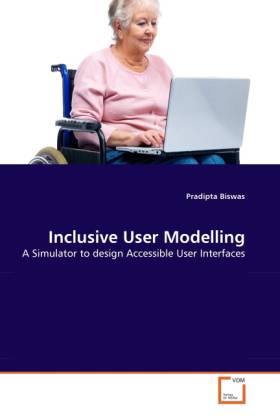
- Afhalen na 1 uur in een winkel met voorraad
- Gratis thuislevering in België vanaf € 30
- Ruim aanbod met 7 miljoen producten
- Afhalen na 1 uur in een winkel met voorraad
- Gratis thuislevering in België vanaf € 30
- Ruim aanbod met 7 miljoen producten
Zoeken
Inclusive User Modelling
A Simulator to design Accessible User Interfaces
Pradipta Biswas
Paperback | Engels
€ 102,45
+ 204 punten
Omschrijving
My research aims to make the interfaces of modern electronic devices accessible to elderly users and people with different ranges of abilities. Existing design practices often isolate elderly or disabled users by considering them as users with special needs. This book has explained the effects of physical impairment on interaction and present a simulator to assist designers in developing inclusive systems. Initially I present a detailed discussion on existing user modelling techniques. I have figured out the shortcomings of existing approaches and present the detail of my simulator. The simulator embodies both the internal state of a computer application and also the perceptual, cognitive and motor processes of its user. The simulator is validated to represent different physical abilities, levels of skill and input devices. It has already been used to design an accessible game for visually impaired users, an assistive interaction technique for motor impaired users and an accessible multimodal digital TV interface for elderly and disabled people.
Specificaties
Betrokkenen
- Auteur(s):
- Uitgeverij:
Inhoud
- Aantal bladzijden:
- 212
- Taal:
- Engels
Eigenschappen
- Productcode (EAN):
- 9783639296051
- Verschijningsdatum:
- 17/09/2010
- Uitvoering:
- Paperback
- Afmetingen:
- 152 mm x 229 mm
- Gewicht:
- 318 g

Alleen bij Standaard Boekhandel
+ 204 punten op je klantenkaart van Standaard Boekhandel
Beoordelingen
We publiceren alleen reviews die voldoen aan de voorwaarden voor reviews. Bekijk onze voorwaarden voor reviews.











